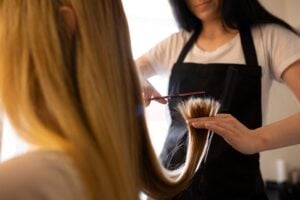African hair braiding is a centuries-old tradition that has evolved both into a powerful cultural symbol and a rewarding beauty industry skill. Whether you’re a cosmetology student, professional hair stylist or simply passionate about working with textured hair, learning how to braid african hair can be very beneficial. In this guide we’ll provide a thorough guide on 5 of the most popular techniques and everything else you need to know about this skill!
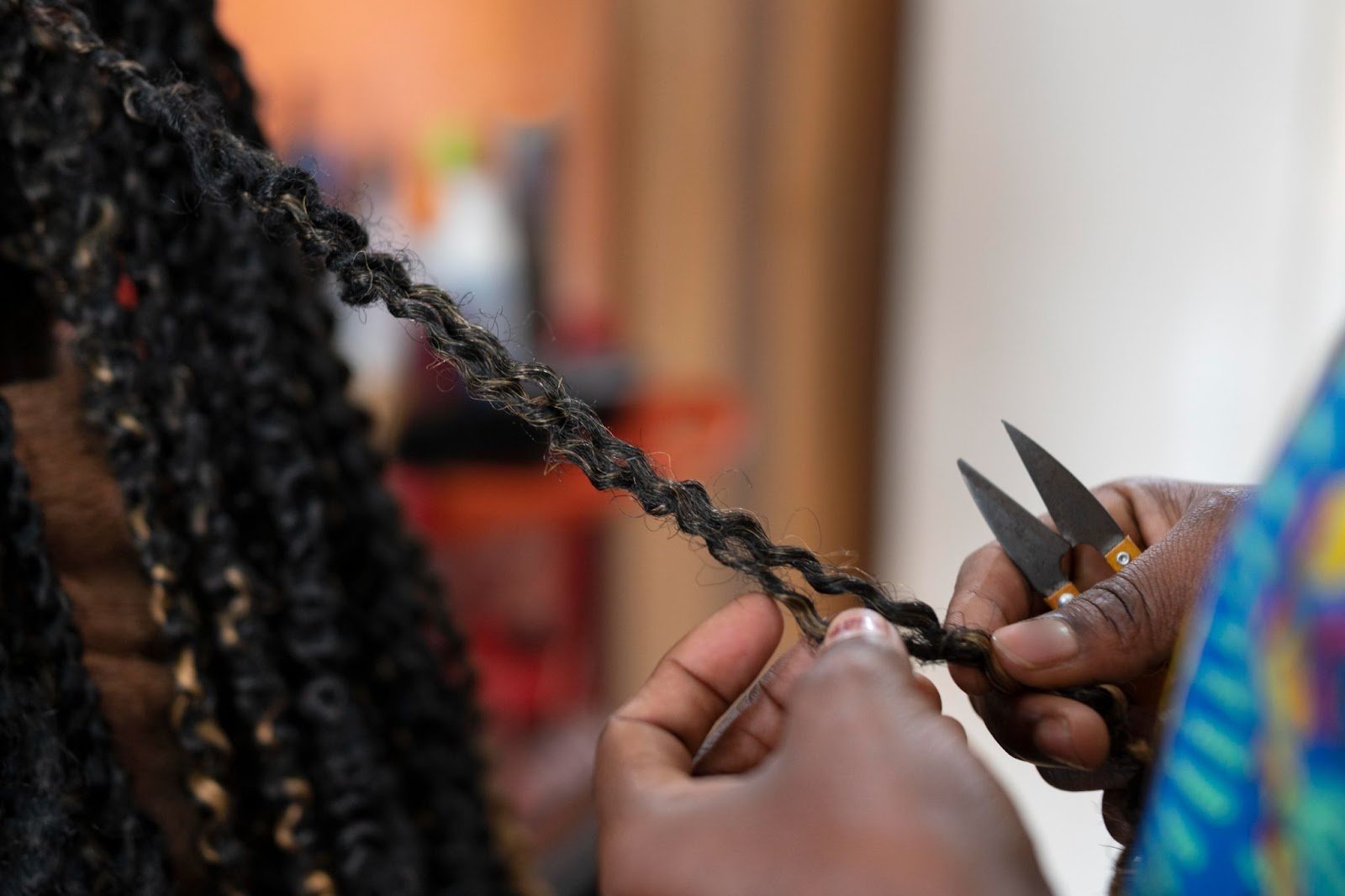
Why African Hair Braiding is a Skill Every Cosmetologist Should Learn
Braiding african hair is more than just a simple hairstyle technique. It’s a deep-rooted art with a history that goes back in centuries. It blends both technical skill with cultural respect.
Modern cosmetologists nowadays must be prepared to serve an increasingly diverse clientele with textured hair needs.
Here’s why braiding skills are a must-have:
- Broaden Your Clientele: African hair braiding appeals to a wide client pool. People are always seeking protective styles that maintain their hair health and offer versatility.
- Career Opportunities: From salons and bridal styling to editorial shoots and social media influencing, braiding skills are growing in demand. So, mastering this skill can open doors to various career paths.
- Cultural Competency: Understanding and appreciating the history and significance of braids shows respect and builds trust with your client base.
- Business Growth: Skilled braiders can charge premium rates and build loyal client bases, especially if they offer trendy and high-demand styles which require specialized skills.
🎓 At Cosmetology Spa & Academy, we strongly emphasize inclusive hair education to fully prepare our students to succeed in today’s beauty landscape.
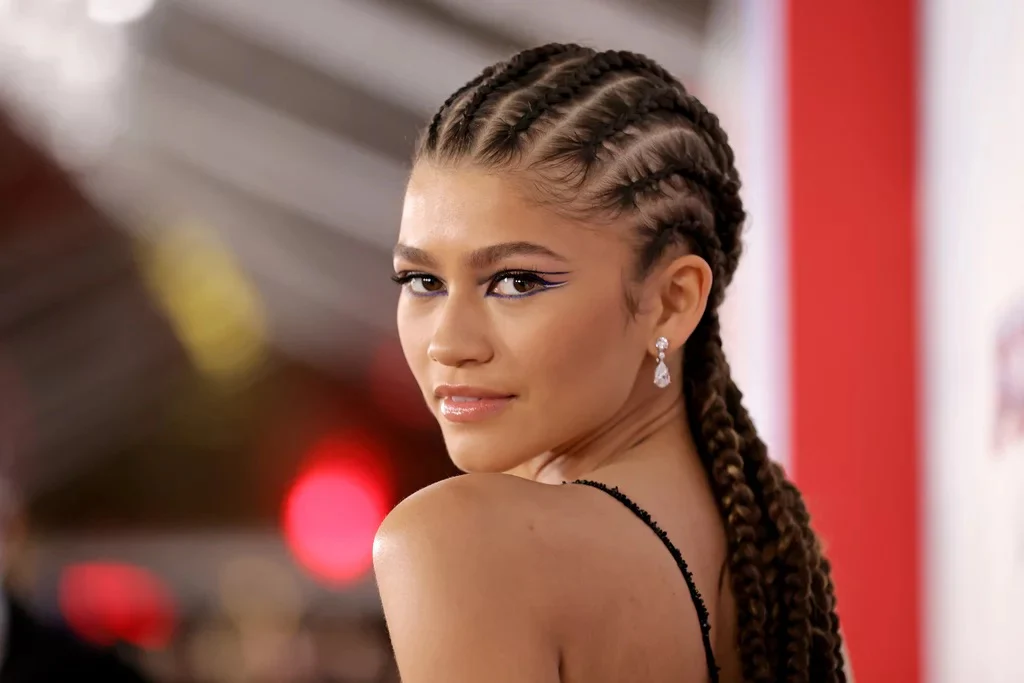
Braids in the Spotlight: Pop Culture, Trends & Social Media
Hair braids have firmly taken center stage in global pop culture. A variety of icons like Beyoncé, Alicia Keys and Zendaya all use braids to celebrate their heritage and boldly redefine beauty norms.
Instagram, TikTok and YouTube are always booming with fresh braid trends which emerge daily. Gen Z is more than ever embracing knotless braids, Fulani braids, Senegalese twists and more, as a means of self-expression.
Also, many hair stylists are using these platforms to showcase their craft, grow their following base and attract new clients through helpful tutorial videos and inspirational posts.
Understanding trending styles will keep your service offerings relevant and it will help you appeal to a younger, trend-savvy clientele.
✂️ At our Cosmetology Program and Barber Program, we integrate current trends to keep students up to date and competitive.
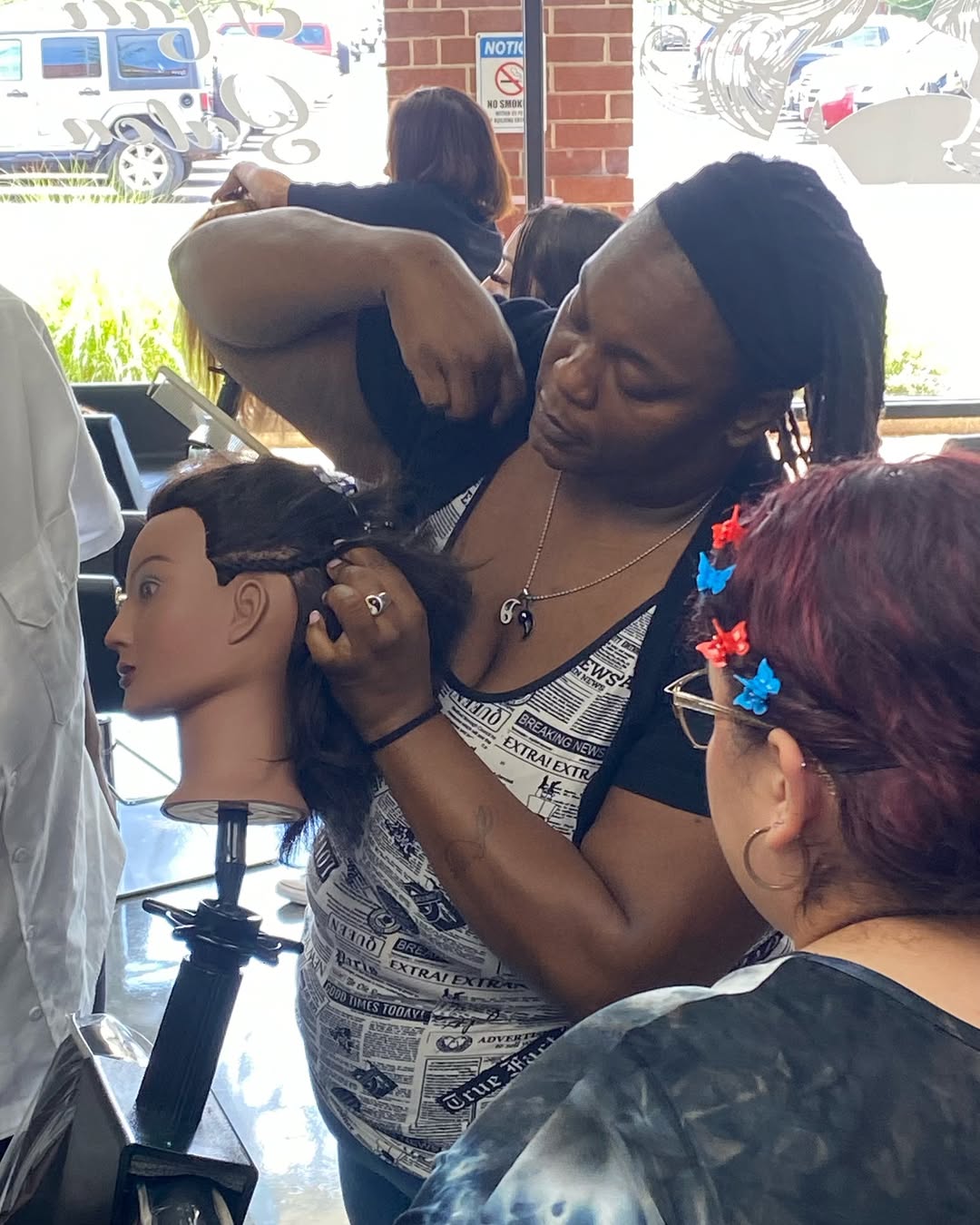
How To Prepare the Hair for Braiding: The Foundation of a Great Style
Proper hair preparation is vital for clean, long-lasting braids that will look stylish and properly protect hair health.
Here is a step-by-step preparation guide:
- Wash The Hair: Use a gentle, sulfate-free shampoo and moisturizing conditioner to remove dirt and any product buildup.
- Detangle: Carefully detangle the hair going section by section with a wide-tooth comb or detangling brush. Start from the ends to the roots to prevent breakage.
- Moisturize: Apply a leave-in conditioner or light oil to maintain hydration, which is crucial for properly managing textured hair.
- Stretch Hair: Stretch hair by blow-drying on low heat or using the “banding” method (a technique used to stretch natural hair without heat by wrapping sections of hair with bands to elongate the curls).
- Section Hair: Use clips to divide hair into sections matching your chosen braid size and style.
- Prepped hair sets the stage for smooth, neat braids and helps prevent scalp tension or breakage.
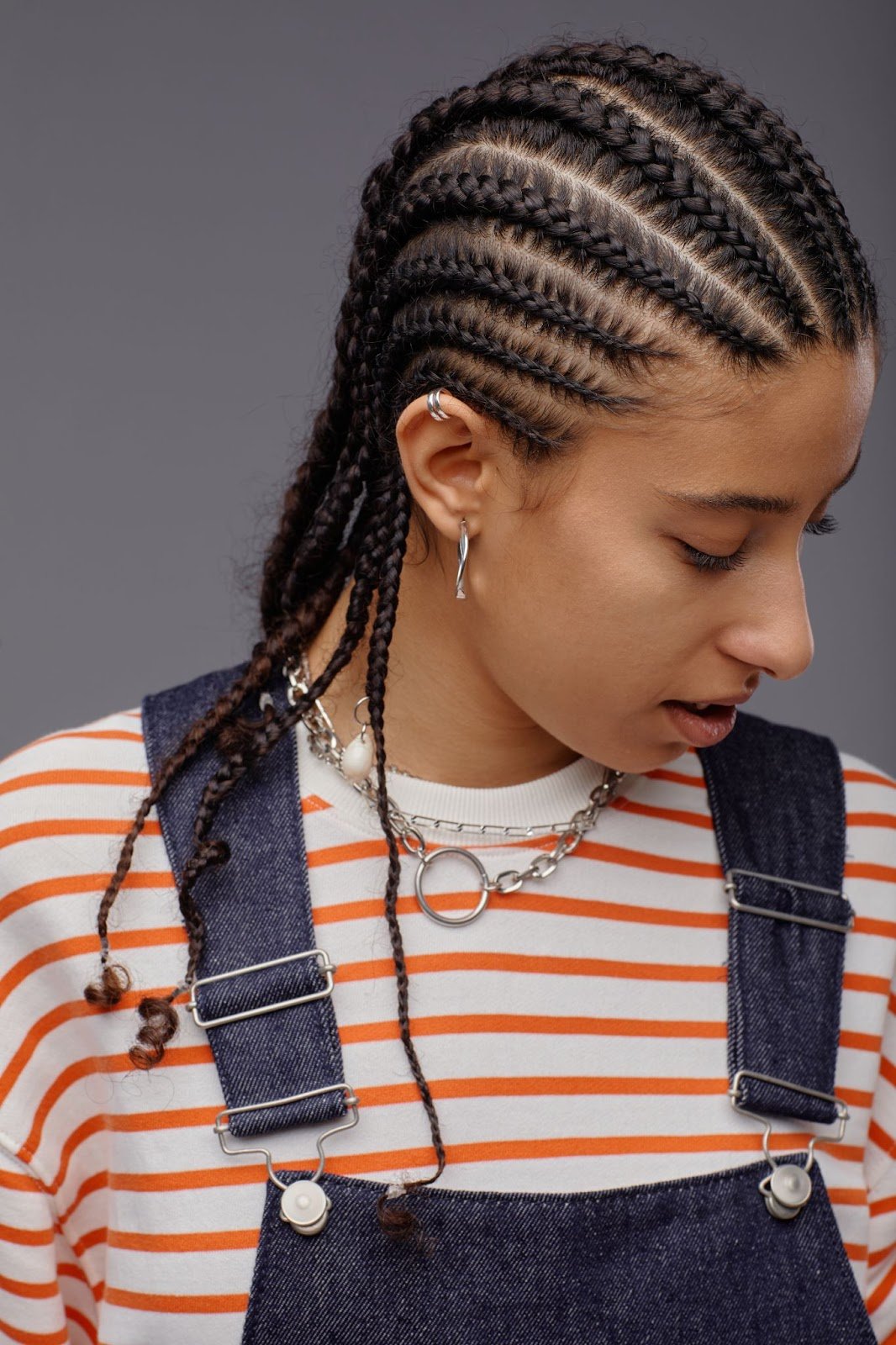
Technique Nr. 1: Cornrows
Cornrows are one of the oldest African hair braiding styles. This model is characterized by tight braids done really close to the scalp. They can be styled straight, curved or even in complex geometric patterns.
How to do black hair braids (cornrows):
- Use a rat-tail comb to part the hair into neat rows.
- Start at the front of one row, take a small section and divide it into three strands.
- Begin braiding by crossing the right strand under the middle, then the left under the middle.
- As you braid, add small amounts of hair from the scalp to each strand before crossing.
- Keep the tension consistent, however, make sure that the braids are not too tight to avoid scalp stress.
- Continue down to the nape of the neck, then braid the remaining length and secure with an elastic.
Some More Tips:
- Use edge control gel to achieve really clean partings and sleek edges.
- Moisturize the scalp regularly to prevent dryness and make the style look polished for longer.
Cornrows are quite low-maintenance, making them a favorite protective style that can last several weeks.
🤔 Looking for a slayed edges tutorial as well? Check out our blog: How To Style Slayed Edges.
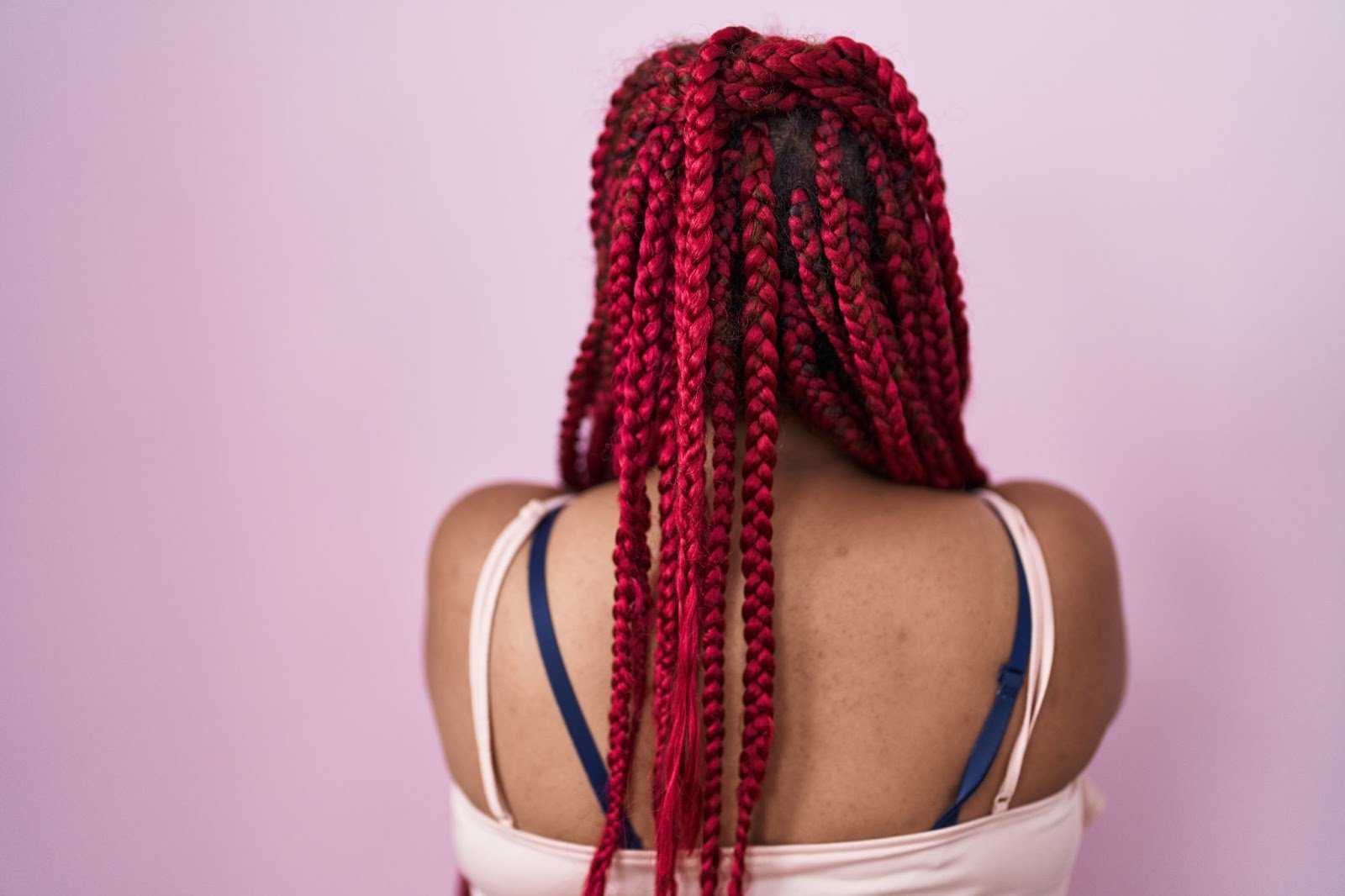
Technique Nr. 2: Box Braids
Box braids are standalone braids sectioned into square or rectangular parts. They are often extended with synthetic hair to achieve length and fullness.
How to do black hair braids (box braids):
- Part hair into square sections using a rat-tail comb.
- Detangle and moisturize each section.
- Take one section, divide it into three equal strands.
- If using extensions, fold synthetic hair and incorporate it seamlessly into your natural hair.
- Braid tightly but comfortably to prevent tension damage.
- Braid down to the ends and then seal synthetic the ends with hot water or secure them with elastics.
Benefits:
- Long-lasting protective style (4–8 weeks).
- Versatile in size and length.
- Can be accessorized with beads, cuffs or thread.
Box braids are a great skill for cosmetologists to master both due to their popularity and profitability.
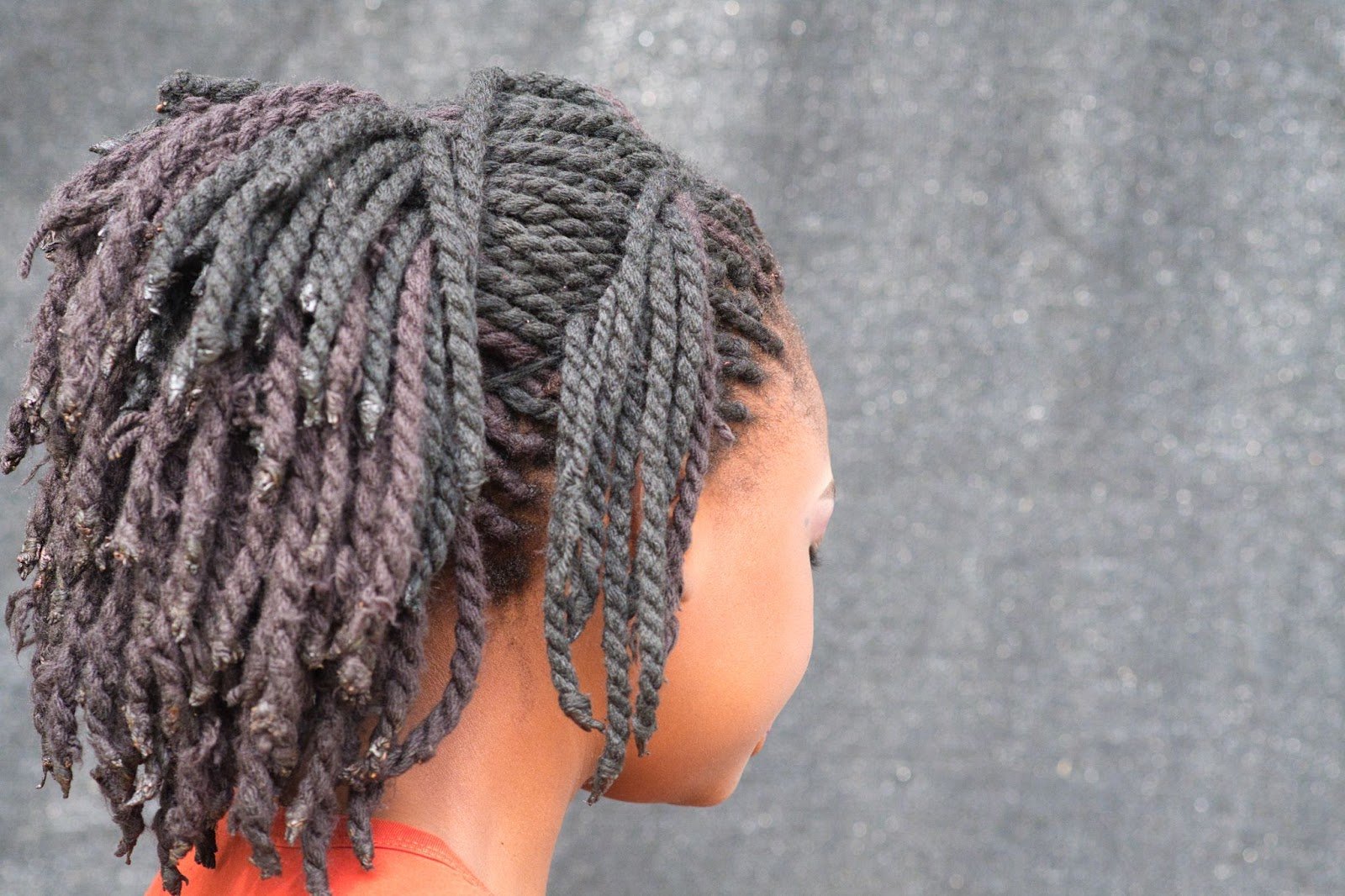
Technique Nr. 3: Two-Strand Twists
Two-strand twists, as the name suggests, involve coiling the strands around each other. This is an excellent style for all hair length.
How to braids black hair using twists:
- Section the hair according to the desired size.
- Divide a section into two strands.
- Twist the strands around each other from root to tip.
- Keep the tension firm but gentle.
- Seal the ends using a styling cream or small elastic bands.
Benefits:
- Great for hair health with minimal manipulation.
- Can be unraveled for voluminous twist-outs.
- Simple to maintain and refresh.

Technique Nr. 4: French Braids
How to do french braids on black hair:
- Start with clean, detangled and preferably stretched hair.
- Take a small section at the crown and divide it into three strands.
- Cross the right strand over the middle, then the left over the new middle.
- Add hair to each strand from the scalp as you braid down.
- Keep the tension even and smooth and use a styling product to reduce frizz.
- Finish the braid normally at the nape of the neck and secure it with an elastic.
French braids offer a put-together and polished look that’s perfect for various occasions and hair lengths.
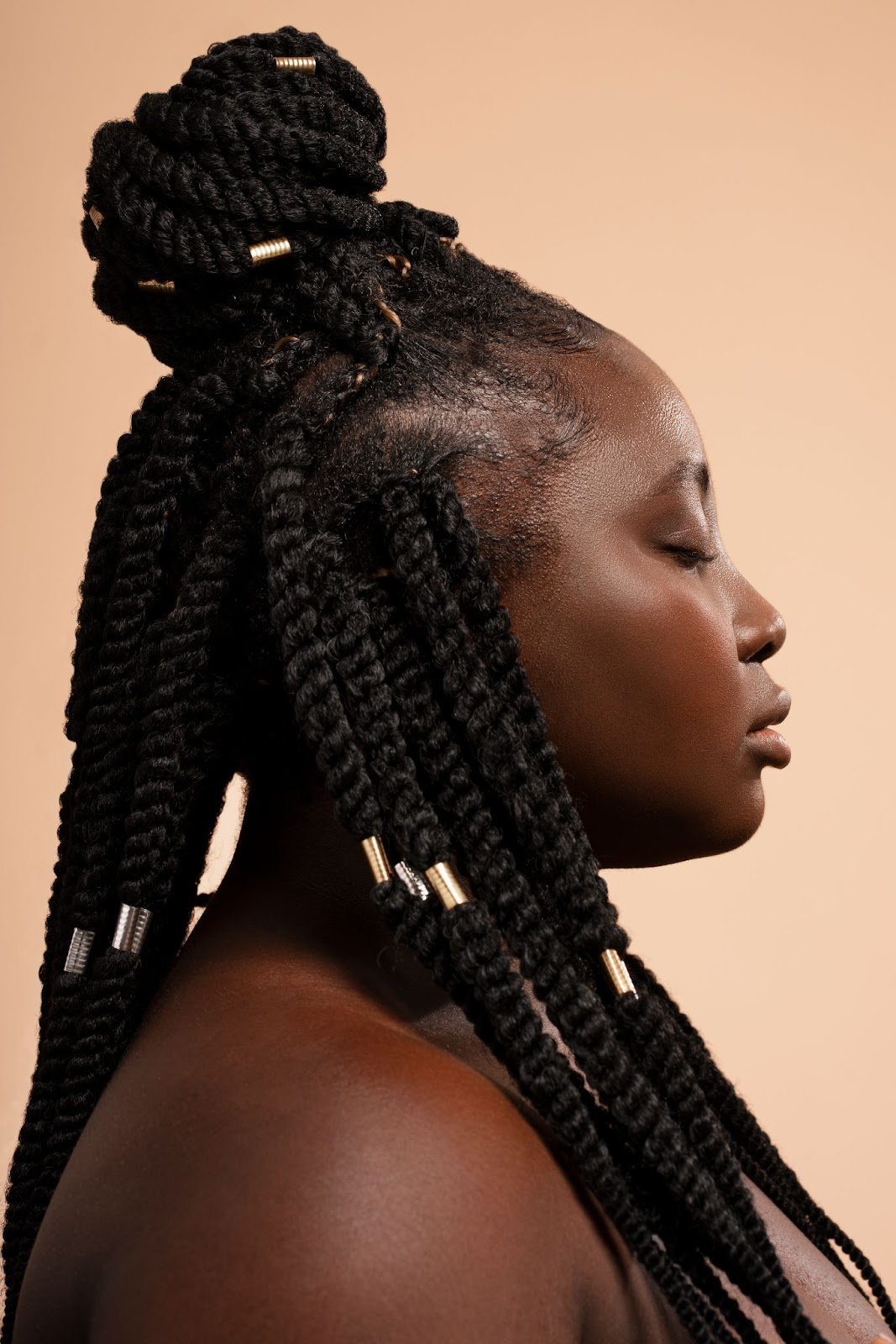
Technique Nr. 5: Knotless Braids
Knotless braids are quite similar to traditional box braids. However, the difference is that they start with your natural hair instead of a knot, which makes them gentler on the scalp and less likely to cause tension damage.
How to do knotless braids:
- Section the hair into the desired size boxes using a rat-tail comb.
- Take a small amount of natural hair at the root and divide it into three strands.
- Begin braiding with just your natural hair strands, crossing them over each other without creating a bulky knot.
- After a few braid stitches, gradually add extension hair to the braid by incorporating it strand-by-strand.
- Continue braiding down the length of the hair with the added extension hair.
- Secure the ends by dipping them in hot water if using synthetic hair or with small elastics.
Benefits:
- Less tension on scalp and edges
- More natural look at the roots
- Typically more comfortable and longer-lasting than traditional box braids
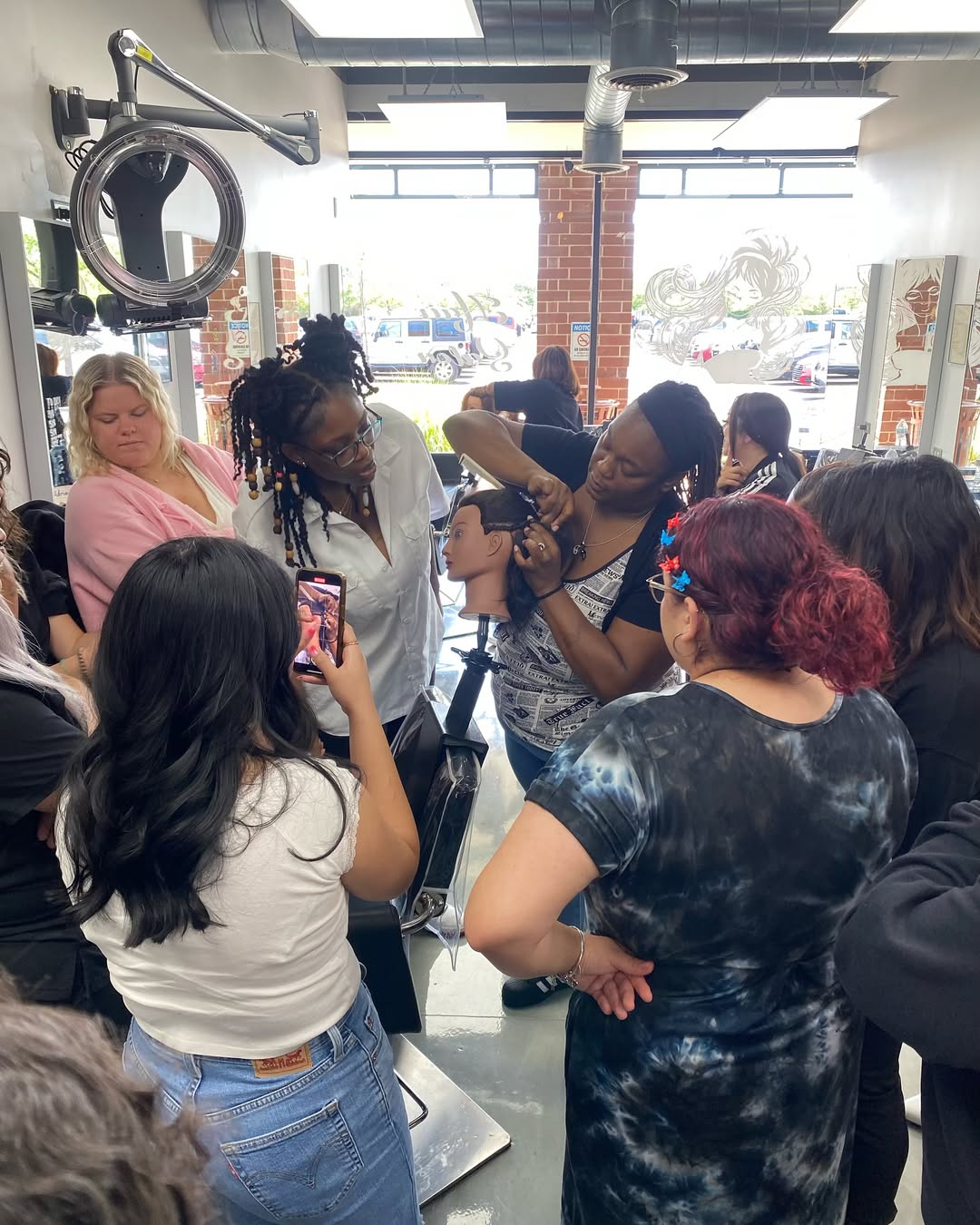
How To Take Care of Braided Hair
Braids are an excellent way to protect natural hair, however they do require proper maintenance. After braiding your client’s hair, make sure to give them the following advice:
- Keep your scalp clean and moisturized with light oils or sprays.
- Sleep with a satin scarf or bonnet to reduce friction.
- Avoid tight braiding to prevent traction alopecia.
- Don’t leave braids in for more than 6–8 weeks.
- Gently cleanse the scalp with diluted shampoo or cleansing sprays between washes.
Remember, good aftercare prevents breakage and promotes healthy hair growth!
FAQs about African Hair Braiding
Do African braids damage your hair?
Braiding African hair is a great way to actually protect natural hair. However, they can damage your hair only if installed too tightly, left in too long, or scalp care is neglected. Proper technique and maintenance are key in preventing damage.
How much does African hair braiding cost?
Costs vary widely: cornrows typically cost $50–$150, box braids $150–$400+, twists $100–$250. Prices rise with length, thickness and added accessories.
How much does an African hair braider make?
Income depends on both experience and salon location. Many braiders earn $30,000–$60,000 annually, with potential for more in busy urban areas or private clients.
How long do African braids last?
Most African braids can last 4 to 8 weeks, depending on the style, hair type and how well they’re maintained. Generally, box braids and knotless braids tend to last a bit longer than cornrows.
Remember that keeping your scalp clean, moisturized and avoiding excessive pulling or frizz can help extend the lifespan of your braids.
Can you wash African braids?
Yes, you can wash African braids. Make sure to use a diluted shampoo and apply it directly to the scalp using an applicator bottle. Gently massage and rinse, then follow with a light conditioner or leave-in treatment. Avoid heavy product buildup and always make sure to dry braids thoroughly to prevent mildew or odor.
What products should you use for African braiding?
For best results, use a moisturizing leave-in conditioner, braiding gel or edge control and a lightweight oil like jojoba or castor oil.
These products help with grip, hold and preserve scalp health. Avoid heavy creams or products that cause buildup, especially if you’re planning to wear your breads for several weeks.




